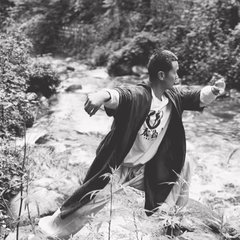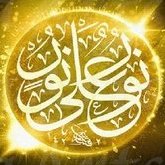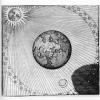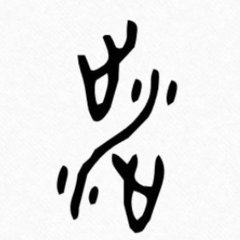Search the Community
Showing results for 'Dream'.
Found 7,590 results
-
Dear Dao Bums, An update! Last night I did the bön visualisation before sleep, and whenever I woke up to turn over during the night.... Nothing!!! Until the morning hours, finally, something happened I dreamt that I was on a beach in a warzone. An enemy patrol came, and I was pleading for my life with the leader. Finally, one of his men suddenly and out of nowhere shot me in the ribcage. It hurt and burnt so bad! Then I awoke. I told myself "it's all just a dream. All the pain, fright, warzone, it's all my own mind. I am the creator of the dream." Then I fell back to sleep. I was lucid dreaming, that I was in my childhood home. I went out, and flew through the air down the street. I noticed there were some trees, which had fallen over on the road. I said to myself "I will restart this dream, but this time, no trees fallen over, everything will be in perfect order!" I shouted like a command, and clapped my hands. I was back in my childhood home, and about to fly out again, however, instead everything turned pitch black. "What's this?" I wondered. Then I had a sensation of falling down in the darkness. It was very strange. There was nothing in existence, everything black, yet I still clearly felt I was falling. Then I remembered I read in a dream yoga book, that the sensation of falling indicates going down to a lower chakra. Then it happened again! After this second fall, wherever I was "in the darkness" was slightly uncomfortable. It was like there was a kind of scary pressure around me. Then I fell again. This time the frightening and invisible pressure around me got to the point, where I could barely take it. It was so much pressure and so scary, I felt like I couldn't take it anymore. I thought to myself "maybe I should stop it and get out?", but somehow I said "it's just a dream, it's just your own mind, relax and see what happens". Then I fell down again. It was unbearable, but I decided to wait it out and see what happens. Then I "flew up a level", and the scary pressure lessened. Then I flew up again, and again, and again. And suddenly the pressure was all gone, and I actually felt good. I realized I had started in my solar plexus (that's where I had the dream of fallen trees). Then I fell down to the navel, which felt ok. Then I felt to the genital, which was where I questioned whether I should stop, because of the pressure. Finally, I was at the perineum, where I could not take it anymore, if I had fallen again. Then I ascended up through the genital, navel and solar plexus. When I got to the heart, I started feeling good. In the throat, I felt so free and light. Finally, in the head, I felt wonderful. Free and light. I was waiting for it to continue to go to the crown, but nothing happened. Instead I could kind of sense a pressure around my left eye which was really bothering me. I wanted to wait it out, but I just couldn't take the pressure. So, I woke myself up, and realized the pillow was kind of pushing into my left eye! I also felt my whole body was electric, and as if all the chakras "I had just gone through" were more open and full of substantial power than usually, especially my genital and root. Take homes Make sure your sleeping position doesn't impede the flow of blood and energy in your body, nor puts uncomfortable pressure anywhere. It can disturb the dreaming. During the night, whenever I woke up, I found myself attaching importance to the dream, telling myself I would remember it in the morning. This was with the purpose of interpreting it. However, it was only when I "let go" of attaching importance to the dream, trying to remember it, that I became lucid. I needed to let go of this importance I attach to dreams, and instead say "it's just a dream, a product of my mind". This perspective allowed me to become lucid in the end. Lastly, I am trying to understand why the two lowest chakras were so unbearable to be in. Either, it's simply because there's less awareness and more instinctive auto-pilot behaviour programmed into these two chakras in general, which the consciousness senses as pressure and fright. Otherwise, it's my own personal development, where I feel good about the activities done by the navel, solar plexus, heart, throat and head chakra, and have also purified and strengthened these chakras in my daily life and living. Whereas I still have not accepted the activities of the two lower chakras completely, and therefore they are not as pure, because I surpress their activities in my daily life. Or maybe it's a mix of both I will see how it goes. But man! It was scary!! Really, truly frightening. And I am very seldomnly scared in my normal life. But this was very frightening.
- 20 replies
-
- 1
-

-
@mcoolio Thanks for sharing your experiences! And thanks for the suggestions @Master Logray Yes, Master Wu mentioned the same thing about sleeping qigong. You shouldn't be "doing" things, you should be resting. That is the "natural" way. This "complete black out sleep" is what happened to me as one of my sleeping qigong experiences during a retreat with him. It was called "shui gong" and translated as "three hearts return to one root". Outside of the retreat, I've only experienced once (by myself) where I succeeded with this. You lie down in the appropriate posture, do the mudra, start the visualisation, and when you get to the end, you go into immediate and complete blackout sleep. This came from the "hidden immortal" TaiJi lineage (as far as I remember). @Mandrake 1) thanks for sharing! Yes, my few mid twenties experiences with lucid dream was also from journaling very interesting! 3) Thanks for sharing last night, I did the same thing; when it happened (lucid), I "lived" some of the things I've always desired in real life, yet never really quite suceeded. Boy was it satisfying I woke up extremely happy, fulfilled and full of energy. If my dream practice starts to stabilise (I really hope so!), I will read up on useful spiritual things to do
- 20 replies
-
- 2
-

-
@Master Logray Ahh, not sure where I saw this qigong in dream thing, can't seem to find it back in my notes. I read that too that in some schools high level practitioner doesn't dream at all. But it's not the same everywhere. Other schools say that it's a waste of time to not (lucid) dream, so much stuff to do there in your dream. Why waste 1/3 of your day doing nothing. Although there are also some practices connected to being conscious in deep sleep state without dreams. If you have full lucidity I believe you can also change the scene of your dream at will. -------------- Another interesting stuff to do: going back into your nightmare :D, or look for a teacher in your dream to learn from.
- 20 replies
-
@Nuralshamal 1) My LD phase was in my early twenties. I journaled extensively and from that, the lucidity just popped up. Part of it I suspect is improving recall of both the LDs you're already having, but also creating a link between the wake up-consciousness and the dream-consciousness. I came to the point where I could easily fill ten pages with dreams every morning and more and more were lucid. Didn't have discipline though so did this in spurts. 3) Not much. Enjoyed myself :3 This was before I had encountered an established spiritual path so didn't have much of significance to do. Today, the situation would be very different. When life permits I would like to do it again and use the lucidity for my current practices. M
- 20 replies
-

Sleeping qigong and lucid dreaming
Master Logray replied to Nuralshamal's topic in Daoist Discussion
If the purpose is for lucid dreaming, it is better to avoid Taoist Qigong. It is a method in the Neidan development. The purpose is either to substitute sitting as some people can't sit well, or to fully utilize every hour in Neidan. When a person is more advanced, he would not dream at all. I can sometimes alter the content of my dream while I am dreaming, not really lucid, but seems more useful.- 20 replies
-
I have some trainings on lucid dreaming. Mostly basic stuff you can find everywhere. Played around it a little without success. But my sleep in general is very bad so I put it aside for a while. Practices on the upper dantian makes for quite solid dreams I find. It gives them a different kind of quality. (haven't experimented much with this.) But my other dantiens are not very developed so I put upper dantien practices aside for now. I heard somewhere that it is very interesting to watch yourself in a mirror during lucid dream! And you could also try to do your qigong practice during your dream.
- 20 replies
-
- 1
-

-
Dear Dao Bums, I'll do this in 4 parts: Intro Practices and personal experiences Conclusion on practice Questions for you Intro Last night I finally managed 3 lucid dreams in a row!!! I am over the moon I've been wanting to lucid dream since I was a teenager. I've gone to several tibetan buddhist workshops with renowned dream yoga lamas, read more than 3 books, watched countless interviews and read countless accounts online. Furthermore, I've been practicing daoist sleeping qigong for more than 4 years (not daily, but in practice cycles). I never felt I got anything from it! It only disturbed my sleep! I had 2 lucid dreams as a teenager. I knew I was dreaming, I knew it was all a dream, yet I could neither control myself nor the dream. This was with buddhist dream yoga and "western scientific" lucid dream (setting an intention, getting up during the night to reset intention etc). In my twenties I managed 3 lucid dreams, when I started to seriously meditate and dream journal. It was simply a byproduct. Here I could not control the environment, but I knew I was dreaming, and I could control myself. For the past 2 weeks I remembered my almost life long desire to lucid dream, and decided to give it a go again Practices and personal experiences What I've been doing buddhist wise is the purification breathing before sleep, visualising a red flower in the throat chakra, chanting the syllables of each petal and also visualising them (Om Ah Nu Ta Ra). None of it gave me anything. Daoist sleeping qigong, I learnt from master Wu. There are 2 sleeping positions, flat on the back with a mudra on your navel, and on your side with one hand on the navel and the other holding a mudra on your ear. You then visualise certain things. No matter how much I tried it, it has only been about 5 or 6 times I felt better sleep from it. All the other times, it simply feels like a qigong. You can feel the qi and blood circulating in your body. There was only 2 times in a particular retreat, where he shared 2 new visualisations he never shared before, that on the first night with the first visualisation, something really happened, and the second night with the second visualisation, I got really deep and restful sleep immediately. However, after I got back home and continued the practice, it didn't have the same effect. Lastly, the past 2 weeks, I gave it a go again with tibetan buddhist practices.... And last night it paid off!! The game changer for me was a bön method from Dr Nida Chenagtsang (I got it from his book "tibetan art of dream analysis"). It's a 5 step visualisation before sleep. This was what allowed me to finally experience lucid dreaming! And it was awesome! I was aware I was dreaming, I could control myself and the environment. It was super dope Conclusion on practice I feel there are 3 things which led to me finally experience lucid dreaming: 1) pure and open channels and energy centers (after 9 years of daily meditation and 7 years of daily qigong, now adding 14 days of daily tibetan practice, finally opened my channels and centers sufficiently) 2) sufficiently strong energy (I could actually feel that in the 3rd dream, the environment was a bit less responsive to my desired changes, I think the reason is that it actually takes some energy to control the dream) 3) I finally accumulated sufficient good karma (never hurt yourself or others, physically or mentally, help alleviate the suffering of others when you can, love and forgive) The tibetan practices I did for the last 14 days were: 9 purification breaths, breath holding meditation from the first steps of karma mudra meditation (the non sexual ones) and the bön visualisation before sleeping. Questions for you Would you like to share your experiences? 1) How did you get to be able to lucid dream? 2) Which practices did you follow, and for how long? 3) What do you do, during lucid dreams? 4) What are your greatest "pro tips" for lucid dreaming? 5) Anything you would like to add on the subject of lucid dreaming? May you all be blessed!
- 20 replies
-
- 2
-

-

Seeing, Recognising & Maintaining One's Enlightening Potential
C T replied to C T's topic in Buddhist Textual Studies
~ Ngak'chang Rinpoche ~ Q Could you talk a little more about Bardo? Rinpoche: "Bardo can be misunderstood as just being the interval between successive rebirths, but Bar-do really means ‘gap’ or ‘space’. Bar means some kind of ‘flow’, ‘river’, or ‘movement’; and do means ‘island’. So it’s like a space or particular point. There are many Bardos... there is the Bardo of Death and the Bardo of Life. There is the Bardo of Visions that arise in the Death state and the Bardo of Becoming, of Dream, of Meditation. So Bardo is a very interesting concept. There is the Bardo of every day, of a particular job, a particular relationship, a particular sequence of events; everything is Bardo in that sense, in the sense of a contained experience. Like the Bardo of this interview – here in this tent. This will be followed by the Bardo of the walk to the shrine room and so on. Its like a space or field of a particular quality of experience, which is followed by space, which is followed by space. Each following space has its own unique flavour. Each space is somehow separate and discrete according to the experience of Bardo. When one really enters into Bardo then this is all there really is – it’s really just one Space – here, in this point instant, but stretching out into eternity. Bardo is essentially now. If you’re distracted... say you’ve got something on your mind... then this is not the realized experience of Bardo." Q What is it then, Rinpoche? Rinpoche: "It’s the Bardo of duality. The Bardo of duality wants to homogenize the individual quality of these endless appearing and disappearing Bardos into some sort of solid ground where nothing ever changes. The authentic experience of Bardo is a kind of bubble experience – it’s there, and then its gone... and there’s another one, then another one, and another one. That devolves into smaller, smaller, smaller, and smaller fields of experience until there is only Now. So... there are bubbles within those bubbles. These bubbles of experience, these Bardos, are linked by Emptiness – when you know that... it’s called Enlightenment (laughter). When it’s concept that links Bardos... this is known as Unenlightenment! So... when it’s concept that links these experiential spaces, you want to blur the Bardo experiences out so that there are no different Bardos. You want to have continuous experience rather than have discontinuous experience. This is the desire to experience continuity – but there is no continuity apart from Emptiness! That is the continuity... which is why the translation of Tantra (Gyüd in Tibetan) is ‘thread’ but, it’s Empty Thread." -
Very nice 3bob, it makes me think I read Gibran far too long ago, when I knew hardly anything. “If you could hear the whispering of the dream” reminds me of one of my favourite lines from one of my favourite texts, “When the green immortal spirit passes over and communicates with me, there is a distant echo.” There’s something that I do want to hear and see, and it’s not emptiness, and it’s not a void, and it’s not even primordial space, its more akin to spirit pointing to the actualising of spirit within my body.
-
From Gibran: "....That which seems most feeble and bewildered in you is the strongest and most determined. Is it not your breath that has erected and hardened the structure of your bones? And is it not a dream which none of you remember having dreamt, that builded your city and fashioned all there is in it? Could you but see the tides of that breath you would cease to see all else, And if you could hear the whispering of the dream you would hear no other sound. But you do not see, nor do you hear, and it is well. The veil that clouds your eyes shall be lifted by the hands that wove it, And the clay that fills your ears shall be pierced by those fingers that kneaded it. And you shall see. And you shall hear. Yet you shall not deplore having known blindness, nor regret having been deaf. For in that day you shall know the hidden purposes in all things,...."
-
I've never been one of the faithful. I imagined death when I was young and vanished for a minute. There was nothing, so I told myself that there is nothing to fear of death. I walked away from the Catholic Church before getting confirmed and I refused to go, I just didn't believe that it was the truth of the world. Sadly in my older years I realize that I was right, but that it is a goal to attain to try and bring that light into the world. The world is animal in nature, and people aren't always at the top of their game when it comes to doing the right thing. Also sad is that I became no better, doing things that I now find morally wrong. I didn't straighten out until I was 22, and even then I did a couple deeds that I am ashamed of. Still, I became a good person mostly, just had a couple kinks. Now I realize that God doesn't play by the rules, and I wonder if there are any in His eyes. I see the animal nature now more than ever, and I realize that life can be a struggle, and we all commit sin from weariness or anger, or foolishness. I wonder how God could police it all anyway? I can't say there is a Heaven or a Hell, but my dreams are not the most pleasant for me, and if there is any indication of where I might end up, it is in dream. My dreams aren't terrible, just not entirely favorable to me; it's no Heaven that I dream, but it's not a Hell either.
-
Can be a side effect, but not exclusively one. There are specific practices (quite a few) within the main schools of Tibetan Vajrayana and many more available due to the numerous sub-sects within those main schools. Because of this, instead of presenting my personal (biased) take, I'd recommend some readings which are available online. These are quite elaborate commentaries, and may not suit one who's not a seasoned practitioner of mantrayana. Its challenging, but at the same time, informative and elaborative enough to address some of your questions. * One's Own Body of Pure Channels and Elements - Naomi Worth * The Practice of the Dream Body - C. A. Muses * Highest Yoga Tantra - Daniel Cozort * Tantra: Concepts, Energy-Winds and Lineage - - - from the website of Berzin Archives * Death, Sleep and Orgasm: Gateways to the Mind of Clear Light by Jeffrey Hopkins There are more, but the above ought to be quite sufficient material to enable a better grasp from a Vajrayana pov what the cultivation of the central channel entails. Its pretty nuanced, and would require a certain degree of maturity in practice to sieve through it all to obtain clarity. None of the articles cross-ref with Taoist esoteric philosophy and practice, but enthusiastic readers can certainly draw their own correlations, and probably will. But personally, I'm a stickler for authenticity, so no mix and match for me. This 15 minute video may offer the important initial foothold pertinent to whats being discussed. https://www.youtube.com/watch?v=iVVq9Bts1KA
-
Esoteric traditions and the practices therein rarely conform to mundane 'facts'. Part of the fun is finding out, thru experiential insights garnered from practice, is that what's been accepted as 'natural' or 'factual' was actually nothing more than an attitude and mindset determined by deeply ingrained, constrictive habits bound up in body, speech and mind - these in turn feed the delusion of "I, me and mine", a regressing cyclical phenomenon informed by neurotic fears and doubts. In dream work it's like being mired in quicksand, escaping, only to fall into another, and another... before suddenly waking up bewildered, drenched in cold sweat.
-

Seeing, Recognising & Maintaining One's Enlightening Potential
C T replied to C T's topic in Buddhist Textual Studies
A model of Buddhist logic in discerning voidness, its pertinence in relation to self liberation, with a small passing refutation of Samkhya and Nyaya Vaisheshika positions. Excerpt from the Berzin Archives. (53) As it's like this, derision's improper in the direction of voidness. Therefore, without indecisively wavering, meditate, please, on voidness. (54) Voidness is the opponent for the darkness of the emotional and cognitive obscurations; (so) how can someone wishing for omniscience quickly not meditate on it? (55) (Cognizing) phenomena (as truly existent) gives rise to suffering: generate fear for that. But (realizing) voidness pacifies suffering: so why does fear generate for that? (56) (Go ahead and) be afraid of whatever, if there were something called a "me"; but as there's nothing that is a "me," then whose fear will it be? (57) Teeth, hair, or nails are not a "me"; nor am "I" bones or blood. ("I'm") neither mucous nor phlegm; and nor am "I" lymph or pus. (58) "I" am not fat or sweat; nor am "I" even lungs or a liver. "I'm" not any of the other inner organs; nor am "I" feces or urine. (59) Flesh or skin is not a "me"; nor am "I" temperature or energy-wind. In no way am "I" ever a bodily hole, nor are the six types of consciousness a "me." (60) And if (a person) were a permanent cognizer (as Samkhya asserts, and) of a sound, the sound would be cognized all of the time. But when bereft of something it cognizes, what does it know, by means of which it could be called a cognizer? (61) If it could be a cognizer without cognizing (something), then absurdly a stick would also be a cognizer. Therefore, it's certain that without something nearby that it's cognizing, it can't be a cognition. (62) Suppose (you said), "It itself is then cognizing a sight." (Well,) why doesn't it also hear at that time? If (you answered), "Because the sound's not nearby," (well,) then it's no longer a cognizer of it. (63) How can something having the nature of the cognizer of a sound become the cognizer of a sight? One can be labeled a father and a son, but not as his absolute nature. (64) And it's like this (because) sattva, rajas, and tamas (as the absolute nature of both a sound and a sight) are neither a son, nor are they a father; (and because) that (cognizer of a sight) has never been seen with a fundamental nature connected with a cognizer of a sound. (65) (Suppose you persisted,) "Like a dancer, it's still itself, but seen with another mode (of guise)." (Well then,) it wouldn't be static. And suppose (you clarified), "It's still itself, but (its fundamental nature) is in another mode." (Well then,) its oneness is one without any precedent. (66) Suppose (you explained), "But its assorted modes (of guise) are not true," then describe, please, its own (innate) natural (guise). Suppose (you answered,) "It's being a cognizer." (Well then), absurdly it would follow that all persons are one. (67) (Further,) what has intention and what lacks intention - those two would, in fact, become one thing, because their existence is the same. And, if individualities were contrary to fact, then what could be their shared support? (68) Furthermore, something lacking intention cannot be a self, (as Nyaya-Vaisheshika asserts), because of its nature of lack of intention, just like a vase and such things. Now (suppose you claimed), "It's cognizant because of a conjunction with an intention," then it absurdly follows that (this) noncognizant (self) has perished. (69) And if the self were (in fact) unchanging, what could have been done to it through (a connection with) an intention? (Moreover,) space is noncognizant and inert like that, so, it (as well) could become a self. (70) Suppose (you then objected), "But, without the (true) existence of a (static) self, the connection between behavioral cause and effect would be unreasonable, since, if it perished after having done an action, then whose action would it have been?" (71) (Well,) since it's established for both of us that the action and result have a different basis, and that the self hasn't an active role in this, isn't it useless to debate on this (point)? (72) "Someone providing a causal (action) and conjoined with its result" - this has never been seen as an existent thing. It's in reliance on the unity of a continuum that it is taught, "(Only) the agent can be the experiencer (of the results)." (73) The already-passed and the not-yet-arisen minds are not the self, since they don't exist (now). And well, if the (presently) arising mind were the self, when it perishes, there would, in fact, be no self! (74) For example, when the trunk of a plantain tree is split into parts, nothing (is found); likewise, when searched for with discerning analysis, a self isn't (found as) an absolute thing. (75) (Suppose) you asked, "If a limited being didn't exist, toward whom could there be compassion?" (Well,) it would be toward one who was conceptually labeled by a bewildered (mind) that had committed itself to the goal of its fruit. (76) (Suppose you then asked,) "Whose fruit would it be, if there were no limited being?" (Well,) that's true. It's accepted that (the wish) is due to bewilderment; (yet,) for the sake of pacifying suffering completely, bewilderment about the fruit is not turned back. (77) But because of bewilderment about the self, the cause of suffering, self-inflation, increases. (Suppose) you said, "But, there's no turning back from that." (Well,) best is meditation on the lack of an (impossible) self. (78) A body is neither the feet nor the calves; nor is a body the thighs or the hips. The belly or the back is not a body; neither is a body the chest or the arms. (79) The sides of the torso or the hands are not a body; nor is a body the armpits or the shoulders. The inner organs as well are not it; and neither is a body the head or also the neck. So what (alternative) could a body be here? (80) If this body were located with a portion in all of these; then, although the parts are located in the parts, where is it itself located? (81) And if a body itself, in its entirety, were located (everywhere), in the hands and so forth, there would be as many bodies as there were hands and so on. (82) As a body's not (located) outside or inside (the parts), how could a body exist in terms of the hands and so forth (as their possessor)? As it's also not (a possessor) separate from the hands and so on, how could it possibly be (truly) existent? (83) Thus, a body's not (truly) existent; but, because of bewilderment in terms of the hands and so forth, a dualistic mind arises of a body. It's like the dualistic mind that arises of a man in terms of a scarecrow, by its feature of having been set up in its shape. (84) For as long as the conditions are assembled, the body (of a scarecrow) is seen as a man; likewise, for as long as there are hands and so on, a body is seen in terms of them. (85) Similarly, because of its being a composite of fingers, which one could be a hand? (The same with) that (finger) as well, because of its being a composite of joints; and a joint as well, from the breakdown into its own parts; (86) And a part as well, through a breakdown into particles; and that particle as well, because of directional divisions; and a directional division too, because of its being without (findable) parts, like space. Consequently, even particles don't (truly) exist. (87) Therefore, what discerning (person) would be attached to a bodily form, which is like a dream? And when, like that, a body doesn't (truly) exist, then what's a male and what's a female? -
and its interesting to add dreams to the discussion...for now and then we may be aware of a dream within a dream within a dream, and if they are dreams that we seem to feel lost in then we want to find a way to wake up from them, and so find ourselves shifting our awareness at that level from one to another to do so... (and just when we thought we were back we realized we were still in another dream)
-

What technique is used to achieve siddhis of super memory and intelligence
C T replied to Asher Topaz's topic in Hindu Discussion
Imo, The yoga sutras were written during times where those who took up that practice had less distractions, therefore, less mental/physical gunk. Lives were simpler, and people had less overall blockages. Conditions then for applying the principles of the sutras were therefore more conducive. In this age, more is required in terms of ground-clearing to first establish a firm and proper foundation for siddhis to manifest. One of the simplest ascertainment is the question: Are you able to consciously control and direct your dreams? Its important, because if you cannot consciously and lucidly develop the strength of an elephant in the dream world at will, it is infinitely more difficult to cause fruition in physical reality. So incorporating dream yoga, in some sense, is logical, and an essential prerequisite to siddhi development. However, its important to note that ultimately thats not the primary service of dream yoga. But its a good foundation to prepare one for siddhi cultivation in this current age. For example, your goal is to tap into the potentiality of super memory. Odds are you're finding it challenging in this current bodily realm, otherwise you wouldn't have started this thread. Dream yoga provides an optimal training ground whereby you can launch a systematic and concerted program to become omniscient (as the ultimate fruition in that dimension). By the time you fully master this in the dream dimension, you will know with conviction whats essential to attain a similar mastery in the physical realm. (Btw, super memory is just an off-shoot of the power of omniscience. Therefore in the dream dimension, its best to aim for the highest, and be as free and adventurous as possible. Even if you miss the ultimate fruit, you will still come away with consolation prizes.) -
Alchemy in Buddhist tantra in the main is more interested in attaining the rainbow body (of light). Ref. Apech's post above. This is one of the reasons dream yoga is a core practice in most tantric traditions. To overcome physical limitations of the body, some of the practices assist the initiate to apply dream yoga in creating a mandala (some sects use the energy of sound) and simultaneously, an ethereal, visceral body of light (at the development stages during the phases of cultivating the outer tantras (kriya, charya and yoga tantras) vis a vis the path of purification initially, and later, path of transformation). When the master ascertains the readiness of the initiate, he or she is transferred culmination practices (abisheka) of inner tantras vis a vis mahayoga and anuyoga, both classed as 'paths of transformation' - this is the completion stage where signs of stability in manifest body of light gradually seeps into the physical world. The masters will be able to notice the onset of this by confirming the presence of shimmering holograms of light around the person, and later (usually years later) a more stable halo will be revealed as enveloping the upper body as the cultivated visceral body merge in subtler and subtler detail with the its physical counterpart. Liberation, Dharmakaya, Rigpa is the ultimate fruition of the culmination of Atiyoga, the ninth and final vehicle, which is the vehicle that Dzogchen places the most emphasis on. Other schools and traditions have varying approaches to this practice. I think Western occult traditions also promote a form of dream yoga. In dream yoga one is basically manipulating energies in lucid dream states that are suffused with limitless potentialities, that otherwise is not accessible by the ordinary waking mind and body. In those portals of limitless potential nothing is impossible, so the practitioner has licence to explore all sorts of possibilities and scenarios as a means to expand physical limits imposed by habitual tendencies. This is the key difference (an important one) between the Buddhist approach and others who claim to achieve results thru various natural consciousness-altering substances.
-
So excellent. My point on reversion to the One is that it would go back from the 10,000 through the Three through the Two through the One to get to the ineffable, the backwards working of the production of the 10,000 things. It would get to the place prior to ideation, the void. The Dao. The place where time and space are not. How odd that our minds must understand things in a linear fashion. Our only dimension, I guess. Except the dream world! Maybe the dream world is realer than the physical one. I'm checking into going to South America and having an ayahuasca experience. If I get any answers, I'll report back here ..... I figure at the forgetful old age of 75, what the heck difference does it make? Probably my marbles will get rearranged. Thanks for posting that video, @CT! The bellows. The randomness and potential for so many zillions of scenarios at any given moment (specifically, prior to a "moment" where time is the measurement) this could well be the answer I'm always looking for about the buddhalands of the Sutras. Countless moments of ideations, all stemming from the void, pre-ideation. It's that pre-ideation that binds us, that is our "soul", the thing that pushes upwards in us to Understand. Understand what? We don't know. But somehow, it wants to know itself in physical form, perfected physical form. That same impetus that is within all of us, regardless of path; even the impetus in an atheist to reject the suggestion that there is a dual 'something' to deny.
-
Depends, I think. A nuclear physicist and a cave hermit, or a DIY expert and us will have significant contrasting ideations and experiences of 'suddenly'. With regards to the stability of things that are thrown out, reliability and constancy is worth considering together. Theoretically, a consciousness having suspended space/time momentarily can indeed instantaneously transform a motor car into a chair, which is actually rather mild compared to more fantastical, even bizarre, transformations which I'm sure we've experienced in the world of dreams. Avidya has forced upon most to regard the waking world as real, prompting a fake sense of stability where things do not suddenly change, and the dream world can only be regarded one dimensionally simply because of its ephemeral nature. Those who practice dream yoga will say that world is far from one dimensional, imo. But sudden change is not that uncommon, isn't it? Its an observable natural phenomenon - for example, how lives were permanently altered within seconds when the tsunami hit many parts of SE Asia not that long ago. Survivors not familiar with relativity and impermanence may well reflect in hindsight on the surreality of it all, and may even proclaim the nightmarish experience as dream-like. Im quite sure a significant number would have.
-

My personal hell, kundalini, kidney energy deficiency, neuropathy/ damaged meridians., Looking for help!
cloud444 replied to cloud444's topic in General Discussion
it was not yang qi. It was kundalini and I did this 3 years ago. I had a dream a snake bite me. and energy went into the three channels I felt it. maybe Yang qi was a apart. but it was definitely kundalini energy, if I stop doing masturbation, I have dreams of snakes and the energy tries to rise again. but my body is damaged and I have neuropathy in all my limbs. I think our language barrier is difficult, and there is no point in me trying to convince a stranger its kundalini. I have not done breathing techniques in 4 years. I have been laying in bed. and the energy has continuously tried to raise on its own. thats why its not yang qi. once this energy opened up It has a mind of its own. I have not done any breathing techniques for years. -
From ‘New Age’ in Wikipedia: Non-Western and indigenous criticism New Age often adopts spiritual ideas and practices from other, particularly non-Western cultures. These may include "Hawaiian Kahuna magic, Australian Aboriginal dream-working, South American Amerindian ayahuasca and San Pedro ceremony, Hindu Ayurveda and yoga, Chinese Feng Shui, Qi Gong, and Tai Chi"[391] The New Age has been accused of cultural imperialism, misappropriating the sacred ceremonies, and exploitation of the intellectual and cultural property of indigenous peoples.[392][393][294][394] Indigenous American spiritual leaders, such as Elders councils of the Lakota, Cheyenne, Navajo, Creek, Hopi, Chippewa, and Haudenosaunee have denounced New Age misappropriation of their sacred ceremonies[395] and other intellectual property,[396] stating that "[t]he value of these instructions and ceremonies [when led by unauthorized people] are questionable, maybe meaningless, and hurtful to the individual carrying false messages".[395] Traditional leaders of the Lakota, Dakota, and Nakota peoples have reached consensus[392][397] to reject "the expropriation of [their] ceremonial ways by non-Indians". They see the New Age movement as either not fully understanding, deliberately trivializing, or distorting their way of life,[398] and have declared war on all such "plastic medicine people" who are appropriating their spiritual ways.[392][397] Indigenous leaders have spoken out against individuals from within their own communities who may go out into the world to become a "white man's shaman," and any "who are prostituting our spiritual ways for their own selfish gain, with no regard for the spiritual well-being of the people as a whole".[398] The term "plastic shaman" or "plastic medicine people" has been applied to outsiders who identify themselves as shamans, holy people, or other traditional spiritual leaders, but who have no genuine connection to the traditions or cultures they claim to represent.
-

Sadhguru on the cause of violence and its solution
Ajay0 replied to Ajay0's topic in General Discussion
Sadhguru's wife Vijayakumari gave up her physical body through mahasamadhi in 1999. Her interest in Mahasamadhi came up after hearing a talk over the subject by a saint they had met in a forest. Even though Sadhguru discouraged her then, she went through the process and attained enlightenment and Mahasamadhi . This happened in front of many disciples and people. Since Vijayakumari was relatively young, her parents who were obviously concerned of her wellbeing and not knowing the intricacies of mahasamadhi, could not accept her physical death and filed murder charges to bring more scrutiny over her death. The police however after investigation stated Sadhguru to be innocent of any wrongdoing. This happened way back in 1999, but is usually taken up by people focused on the negatives. Vijayakumari led a dream life with Sadhguru , who often took her in his adventure trips and motorbiking expeditions throughout the country. Both of them were not born in a background of yogic culture and had led fairly materialistic and secular lives, till Sadhguru's experience of enlightenment on Chamundi Hill on Mysore. Sadhguru had also spoken of his wife's experience of Mahasamadhi here... https://isha.sadhguru.org/us/en/sadhguru/man/vijji An enlightened master had stated to me that most people who attain enlightenment leave the body consciously. It's not that they are embracing death but are embracing life at a much more conscious and blissful level. He told me that it is those who have previous impressions or tendencies of compassion, as well as having articulate communication skills, who usually remain in the body so as to share their experiences and teachings, and show the path to others as well. Buddha had himself left his body though Mahasamadhi after he found that his body was old and damaged by disease beyond repair, and had stated his intentions to his disciples as well as final instructions. Jiddu Krishnamurti , after getting diagnosed as having pancreatic cancer at 90, similarly ended his talks and lectures , citing his lack of fitness for the same, and after communicating his decision to leave his body through mahasamadhi to his close friends and associates, gave up his body. This is stated in the biography 'The Light of Krishnamurti' by his friend and associate Gabriele Blackburn. -
I refer once again to my dream of the vine and the structure, the trunk of the vine and the post are indistinguishable from each other and yet have to be pulled apart, your author chooses yoga, I choose my method, and I have seen that my method will work for me, and the job will be done properly and once and for all. The only way I could make a mistake is by rushing to the outcome before finishing the initial work. edit to clarify: “The ego is a chameleon which takes any colour, any shape, according to the atmosphere in which it lives. It knows its tricks very well, much more than all the understanding can work. It is a chameleon in the sense that it can assume the colour of the atmosphere in which it lives, so that we cannot detect it or discover it. It is one with the atmosphere, so how will we discover it? It has taken the same shape, colour and value of the conditions under which it is living, so it cannot be attacked.” This is the trunk and the post, indistinguishable from each other. What I know is that the ego can also take on the cloak of nonduality, it assumes the colour of the atmosphere in which it lives… so that we cannot detect or discover it… What better place to hide?
-

Differences between dualism and non-dualism
Mark Foote replied to Bindi's topic in General Discussion
The "Mahamudra" and non-dualism in the Buddhist tradition, an historical note from Wikipedia ("Mahamudra"): The actual practice and lineage of mahāmudrā can be traced back to wandering mahasiddhas or great adepts during the Indian Pala Dynasty (760-1142), beginning with the 8th century siddha Saraha. Saraha's Dohas (songs or poems in rhyming couplets) are the earliest mahamudra literature extant, and promote some of the unique features of mahamudra such as the importance of Pointing-out instruction by a guru, the non-dual nature of mind, and the negation of conventional means of achieving enlightenment such as samatha-vipasyana meditation, monasticism, rituals, tantric practices and doctrinal study in favor of mahamudra 'non-meditation' and 'non-action'. Later Indian and Tibetan masters such as Padmavajra, Tilopa, and Gampopa incorporated mahamudra into tantric, monastic and traditional meditative frameworks. I particularly like the bit about "non-meditation" and "non-action". "The non-dual nature of mind", the self-awareness that can take place at the hara, especially in "non-meditation" when breathing becomes a "non-action". More history I didn't know, from that most trustworthy of all sources (kidding), Wikipedia ("Tilopa"): (Tilopa) became a holder of all the tantric lineages, possibly the only person in his day to do so. As well as the way of insight, and Mahamudra he learned and passed on the Way of Methods, today known as the 6 Yogas of Naropa, and guru yoga. Naropa is considered his main student. He began to travel throughout India, receiving teachings from many gurus: from Saryapa he learned of inner heat (Sanskrit: caṇḍalī, Tib. tummo, inner heat); from Nagarjuna he received the radiant light (Sanskrit: prabashvara) and illusory body (Sanskrit: maya deha, Tib. gyulu) teachings (Cakrasaṃvara Tantra), Lagusamvara tantra, or Heruka Abhidharma; from Lawapa, the dream yoga; from Sukhasiddhi, the teachings on life, death, and the bardo (between life states, and consciousness transference) (phowa); from Indrabhuti, he learned of wisdom (prajña); and from Matangi, the resurrection of the dead body. As advised by Matangi, Tilopa started to work at a brothel in Bengal for a prostitute called Dharima as her solicitor and bouncer. During the day, he was grinding sesame seeds for his living. During a meditation, he received a vision of Vajradhara and, according to legend, the entirety of mahamudra was directly transmitted to Tilopa. After receiving the transmission, Tilopa meditated in two caves, and bound himself with heavy chains to hold the correct meditation posture. He practiced for many years and then met the mind of all buddhas in the form of Diamond Holder Vajradhara. He is considered the grandfather of today's Kagyu Lineage. Naropa, his most important student, became his successor and carried and passed on the teachings. Again from Wikipedia, an eye-witness account of Naropa: I thought I would go see the Lord Naropa, since his reputation was so great. I went east from Magadha for a month, as I had heard that the Lord was staying in the monastery known as Phullahari. Very great merit arose from being able to go see him. On the day I arrived, they said some feudal prince had come to pay homage. So I went to the spot, and a great throne had been erected. I sat right in front of it. The whole crowd started buzzing, "The Lord is coming!" I looked and the Lord was physically quite corpulent, with his white hair [stained with henna] bright red, and a vermilion turban on. He was being carried [on a palanquin] by four men, and was chewing betel-leaf.... -
另外能夠出現清淨光法身,必然同時在睡眠上有著重大的改變 也就是你是醒著睡覺的,你的睡眠就像是沉在水底當中,雖然身體是睡著的,但是你的內在是清醒的 如果你沒有這種狀態,你的清淨光法身非常有可能只是一場夢境而已 而做這種夢,還把夢境當成清淨光法身,這種情況不是好事 這表示價值觀在某一個程度上,已經很嚴重的扭曲了 強烈的想蘊導致強烈的行蘊 In addition, to be able to appear the Pure Light Dharmakaya, there must be a major change in sleep at the same time. That is, you sleep awake, your sleep is like sinking in the bottom of the water, although your body is asleep, but your inner is awake. If you don't have this state, it's very likely that your Pure Light Dharmakaya is just a dream. And when you have this kind of dream, you also regard the dream as the Dharmakaya of pure light. This situation is not a good thing. This means that the values have been seriously distorted to a certain extent. A strong aggregate of perception leads to a strong aggregate of mental formations








